5 Industry Truths From A Lifetime Making Indie Horror Films
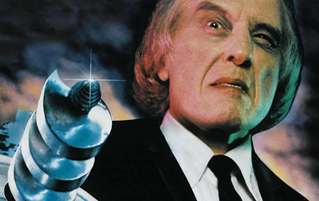
Horror is supposed to push boundaries. With all due respect to the many films about invisible ghosts haunting camcorder footage of suburban homes, we think great horror should include at least one scene that makes you turn to your date and say, "Did that just fucking happen? Or am I having a psychotic break right now?"
That brings us to Don Coscarelli. Depending on your taste in horror movies, the name will draw either a blank stare or a squeal of glee. He's the director of the beloved cult franchise Phantasm, as well as The Beastmaster, the "Elvis and JFK fight a mummy" classic Bubba Ho-Tep, and whatever John Dies At The End is. If you don't know Phantasm, they're the movies where flying silver spheres drill into victims' skulls with extreme prejudice.

It also marks the one time a skullet has ever looked cool.
Coscarelli has been making deeply weird movies for a long, long time (a new Phantasm film just hit streaming sites, meaning the series has run for 37 years). So yeah, the guy has some stories to tell.
Low-Budget Stunts Plus A Young Crew Equals Lots Of Near-Deaths

Phantasm, made when Coscarelli was 25, was done on a small budget with a cast and crew of amateurs. That can be exciting -- everyone's young and feels like they can accomplish anything, and there's no stuffy executives telling them that it's a bad idea to, say, have the hero appear to get murdered by zombie dwarves in the final shot. But there's a downside.
"At that age, we were so enthusiastic and so totally ignorant about safety. And thank God nobody died. We had a massive wind machine, basically an airplane engine on a stand. And we needed a windstorm outside the mausoleum at the end of the movie. It was kind of a cold night, so somebody had run out and bought these cheap mufflers, and given everyone a muffler to wear ... "
We're going to pause the story right there so you can visualize the giant fan ...

Note the convenient head-sized hole in the cage!
... and imagine people standing near it wearing really long scarves around their necks. If you have ever seen a slapstick comedy or cartoon, you can guess where this is going. "I turned to David Brown, he was the art director. I signaled him to go turn the fan off, and he ran over to it, and the freaking wind machine grabbed his muffler and yanked him. Luckily it was a cheap muffler, and it snapped and threw him back. If it had been, like, a Burberry muffler, he would have just been killed. I probably shouldn't talk about it, but it's decades later and Dave's still alive, healthy, and thriving, so I can tell the story, but man, that was horrible."
But they all learned their lesson from such a close call ... right?
Nothing safer than filming a chainsaw fight.
"We almost killed our actor, Bill Thornbury, who played Jody, because we thought that if you shot a movie blank, there was no danger whatsoever. What we found out a few months after is that an actor on a television series had taken a gun with a blank and was goofing around, and for some reason pulled the trigger like he was pretending to commit suicide. And there is a wad of some material , and it came out and cracked his skull and killed him . So that's the subtext when we handed Bill a gun, and then we put this rubber dwarf on his back and said, 'Okay, hold the gun backwards and shoot behind your head while you're fighting him.' So he's fighting with the dwarf, and he's got the gun, and God knows what it was aimed on, and it goes off and blows the dwarf off, and we literally dodged a bullet."
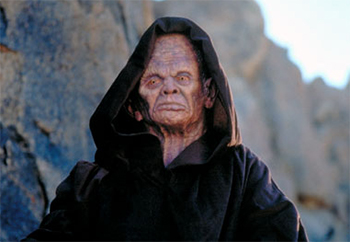
"Die young and leave a beautiful corpse, I always say."
Okay, but then, after two close calls, they knew they had to start playing it saf -- oh, shit.
"I had this idea that as part of the chase, Jody would pop up through the sunroof and shoot at the driverless hearse that's chasing him. I want to get that close up, so the plan is I'll take the camera and sit in the trunk, and he'll shoot the blanks by me."
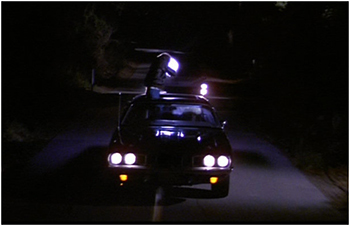

"What possible risk could there be in that white-hot muzzle flare?"
"And one of the smart guys on set goes, 'There might be some stuff coming out of that blank, you need to cover yourself up.' So they took this cushion and duct-taped it to my head. So I get up there and he's shooting , and then we get out and I'm going, 'Wow, that was really cool, really great!' What I don't know is that my head is on fire and I can't see it. It lit the cushion on fire, so there's this mad scramble where everyone's trying to yank this thing off my head before it got through and burned me."
See, all you aspiring filmmakers? You thought it was all glamorous fun, and in reality, it's ... okay, it still sounds fun.
Old Special Effects Needed Both Ingenuity And Dumb Luck

When you think of "low-budget" horror these days, it usually means a movie about a family living in a house where a poltergeist occasionally opens some of their cabinets. Don Coscarelli's movies are ... not like that. Here's a flying brain-drilling sphere digging into the cranium of a victim, then spurting blood across the room as the mechanism tears into an artery:
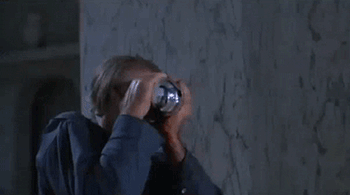
"Don't watch! I can't bleed if you watch!"
If you filmed that scene today, you'd assume it'd involve having an actor scream and thrash around, then digitally painting in their attacker in post. CGI did not exist in 1979 (see "Director getting head caught on fire during a stunt" above), so making a festival of gory insanity like Phantasm meant handmade gadgets and a willingness to make a mess.
"When that ball hits the guy, that drill bit comes out. And one of my associates had a blood tube with a giant plunger. So we had it all worked out -- one guy was working the drill, the other guy was working the blood, so as touches the forehead, the guy's supposed to hit the blood pump. But it didn't work the first couple of takes; there was a blockage in the blood tube. I'm watching it, I give the signal, the drill comes out, it touches his forehead, and it starts to wrap the makeup up, and it looked pretty cool, like it was tearing the skin up. But it just kept doing that, it wasn't going in, and I just kept waving my hand like 'Blood, blood, blood!' and the guy's pushing on it and it won't come out, and suddenly that little blockage popped and there was this splatter. And amazingly, it looks like the drill is cutting through the skin and then punches through the skull and the blood comes out, so that timing and luck made it look really freaky."

Note the "Please work this time" look in the actor's reflection.
If you watch the clip, you see that the sphere zooms around a bit first. And that effect was accomplished much the same way you accomplished "special effects" when you were six and playing with your action figures -- by throwing shit around.
"Getting the thing to fly, we tried all kinds of stuff with wires, and it just wasn't working. Then we hit on this idea of getting a kid who was a college baseball pitcher to just throw the ball from behind camera and reverse the film."

Splatter up.
These days, of course, you don't need a big budget to create even fairly decent CG effects. A talented artist can use software like After Effects to show people's cranial blood getting sucked out in any number of imaginative ways. That means it's easier than ever for aspiring filmmakers can get their stuff made, so this has to be the golden era for indie horror, right? Well ...
It's Easier Than Ever To Make A Movie (And Then Have It Ignored)

Making deeply strange, low-budget horror has never been a walk in the park (trust us, in 1979, movies about head-sucking spheres weren't exactly getting the Star Wars treatment). Coscarelli has been making a living at this long enough to have seen the invention of VHS, then DVD, and now streaming -- with the business model changing every time. These days, the problem for someone like him isn't getting their stuff in front of the public -- it's not getting lost in the utter avalanche of new content. IMDB lists a jaw-dropping 9,719 movies which came out in 2015 alone, and that's not counting all of the web shorts that don't get their own IMDb pages (and, you know, porn).
"The challenge nowadays is punching through the clutter. There's so much. In the old days, three or four movies would come out every weekend, and that would be it. But nowadays, if you go onto Netflix, you might have to dig in 30 or 40 menus to find a movie that you're looking for ... I think with young filmmakers, it's just so hard to get noticed unless you get really lucky."

The title Really Entertaining Horror Movie Please View We Worked Really Hard got shot down by marketing.
And if you don't get noticed, you're not going to pay the bills. The current landscape is great if you're making something for fun; unlike when Coscarelli was starting out, you don't have to get your hands on expensive rolls of film, you can find collaborators by hopping online, and there are countless websites willing to walk you through the basics. But it's harder than ever to make a living at it, as indie filmmakers themselves will tell you.
"Fourteen years ago, I made Bubba Ho-Tep, and the DVD market was really strong ... a distributor could make a profit of like 10 bucks off of a single DVD. But now, if you put it on streaming, it's less than a quarter a view. Money's just been sucked out of the business. But at the same time, movies are a lot cheaper to make now. There was a great picture out last year called Tangerine that was shot on an iPhone 5, and it looked pretty darn good."
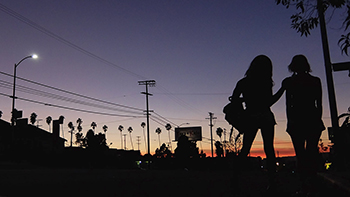
Right now, everyone with an iPhone in their pocket is reexamining how they spend their free time.
Still, that movie got lots of press attention and raves from mainstream critics -- good luck getting the same treatment for that zombie flick you and your buddies shot around town hoping it'd be your big break. If you aspire to do it the old-fashioned way and get your opus made (and promoted) by a studio, you'd better be ready to make something pretty close to whatever is in style at the moment. That's why your theater has been hit with identical movies that arrive in waves (like "Young people getting tortured in filthy warehouses" and "Besieged family filming their haunting with a GoPro").
"It's strictly a financial decision. It has nothing to do with people wanting to make found footage movies. In the late '90s, early 2000s there was Japanese horror, all of those movies with the girl with the black hair hanging in front of her face, and it got to the point where if you saw another one, you'd scream, and it wasn't because you were scared. Now that stuff's gone away, but someone could probably come out with a J-horror ghost story now and bring it right back."
To Make A Good Movie, You Need To Be A Good Businessperson

Making movies may be easier, but it's not easy. That's because movies by their nature will always involve the work of lots and lots of human beings. So the world is full of artists who have a vision, but who find themselves working in a medium that demands they also be great at networking. Even if you're making fun stuff about Elvis fighting a mummy, you find yourself needing the shrewd heart of a salesperson to get it done.
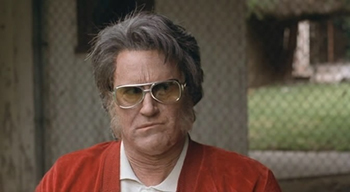
And that's with the most beloved cult-horror actor ever already in your corner.
"When I started making movies, no one ever said to me that to succeed, you need to have an ability with marketing and sales, and be able to sell yourself and your projects. Filmmaking requires a market. Any movie takes an upfront investment of tens of thousands hundreds of millions of dollars. So it requires salesmanship to get into a position to practice your art. I'm sure there are some brilliant filmmakers out there who just have no ability with that, and disappeared.
"Terrence Malick, his first couple movies came out, and then he disappeared for decades. Stars rallied around him and were able to bring him back. It's not discussed much -- it would be interesting to have more film journalists' first question be 'Tell us about your frustration trying to work and raise money.' You'd get an earful."

Turns out that in the days before Kickstarter, funding an indie film could get, well, a little weird.
You also need a cast and a crew, and even if one's resume only has a stint as a tree in an off-elementary-school play, it's not easy to secure their time. "Usually, there's a lot of begging, trying to get people to do things for cheap or nothing. That's an ability that's necessary. And trying to make connections with people who can do things that no one else can do ... you have to learn how to network, and stay in contact with people you meet, all kinds of things that I didn't know anything about when I was first starting out."
So exactly how much hustling does it take in between projects? Let's put it this way: Phantasm II came out nine years after the original. Coscarelli was in talks to make the newest movie, Ravager, in 2005 ... and it came out in 2016. There's been talk of a Bubba Ho-Tep sequel since 2002, and it's still unclear if it will ever happen. So you can dream up a genius idea for a movie overnight, then spend over a decade scraping together the money, the stars, and the marketing. Then maybe you'll get a big hit, or maybe you'll watch your life's dream be buried beneath a pile of Paranormal Activity knockoffs.

Or have 30 years' work get labelled a cheap knockoff thanks to an unfortunate release date.
That doesn't mean you shouldn't try -- do it right, and kids will be dressing like your characters for Halloween half a century later. "Horror's eternal. From The Cabinet Of Dr. Caligari through Karloff and Frankenstein, through the '50s monster invasions and Godzilla, then through Texas Chainsaw ... people keep reinventing and coming up with cool stuff. And I'm firmly confident that there's some 19-year-old kid out there reading Cracked who's a horror fan and has some germ of an idea, and in the next few years they're going to put it on film and we'll all be blown away."
If You Build A Loyal Fanbase, Good Things Will Happen
Horror is a weird genre -- the only one where fans pay money to purposely be scared or grossed out, and leave disappointed if they haven't had an experience millions of years of evolution has taught them to avoid. But when it works, it hits people in a way few genres can.
"You can elevate people out of their seats. That's a freaky thing to do, to have a scene that works and go watch an audience and count down as it's coming to that punch. You just watch 100 people jump out of their seats, it's pretty sweet. The first movie that ever really scares you, I think you hang onto it, it had an impact, like a first crush. You always remember it."

*sigh* "He can still make our hearts go 'AHHHHHHHH!' even after all these years."
It can also be lonely. Once upon a time, if you were a small-town kid having that "jump out of your seat" experience at a late-night showing of some gory slasher flick, you probably had no one to share it with. Doodling pictures of your favorite movie on your notebook got you labeled as the Weird Kid (or sent to the school psychologist). Today, those "weird" fans are no longer alone. "It used to be that fans never had contact with one another. In fact, if you can believe this, certain fans would buy an ad in the classifieds in the back of Fangoria magazine and say 'Phantasm fan looking to meet other Phantasm fans and talk,' and then they'd just call up on the phone and talk about it."
One of those obsessive fans happened to be J.J. Abrams, who recently helped Coscarelli remaster Phantasm (Captain Phasma from The Force Awakens got her name as a tribute).
"He just called me up out of the blue and wanted to talk about Phantasm. He wanted to show the movie over at his company, Bad Robot, and he couldn't believe there was no hi-def material. So he said, 'We can fix that,' and I found myself in this position of working over there, mostly at nights, when they'd have time between their other big movies. The guys working on Star Trek and Star Wars would call me up and say, 'Come over Tuesday night for four hours, and we can do some work.'"
All those nights added up to about two months of work, and included removing all the visible tape, paper clips, and fishing line from the special effects and cleaning up all the imperfections on the cheap secondhand film that Coscarelli had used. Oh, and one other important change:
"The real great part is ... look, I've got a sick sense of humor, alright? So , he hits the ground, and then I'm thinking 'Well, you've just been killed by this otherworldly thing, you have to piss yourself.' So we had it all worked out that the guys behind had a bucket of apple juice and a bucket of beer, so you've got this foaming yellow stuff which would come out. But then on the original VHS, the color correction was so bad, so you never saw the urine. But now it's beautifully restored, the colors are balanced, and now you can see. So I hope people appreciate it."
You can learn about Phantasm Remastered and Phantasm Ravager here, stream Ravager here, and follow Don on Twitter. Mark is also on Twitter, and has a book.
For more insider perspectives, check out 5 Things I Learned As A Child Star Of The Worst Movie Ever and 5 Reasons Doing Movie Stunts Is Harder Than You Think.
Have a story to share with Cracked? Email us here.
Subscribe to our YouTube channel, and check out 7 Movies That Don't Realize They're Horror Movies, and other videos you won't see on the site!
Follow us on Facebook, and give us a big hug, please.
